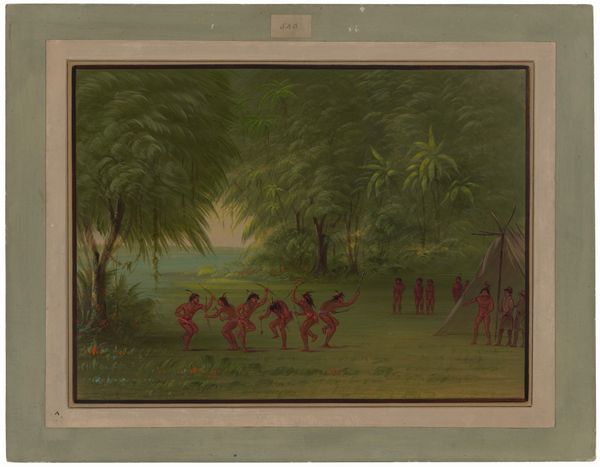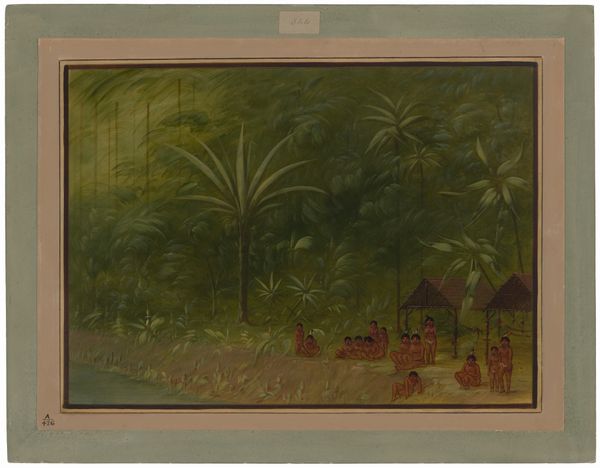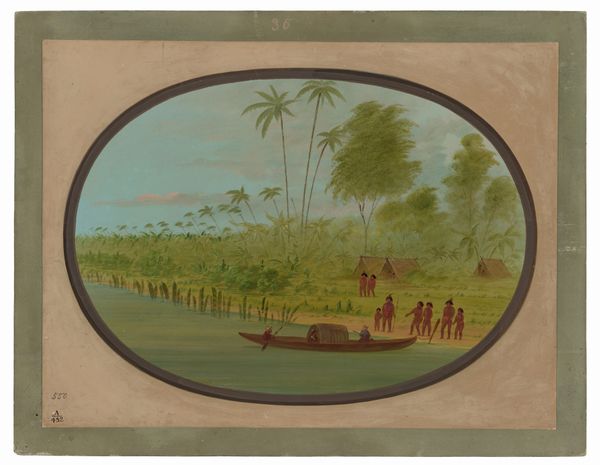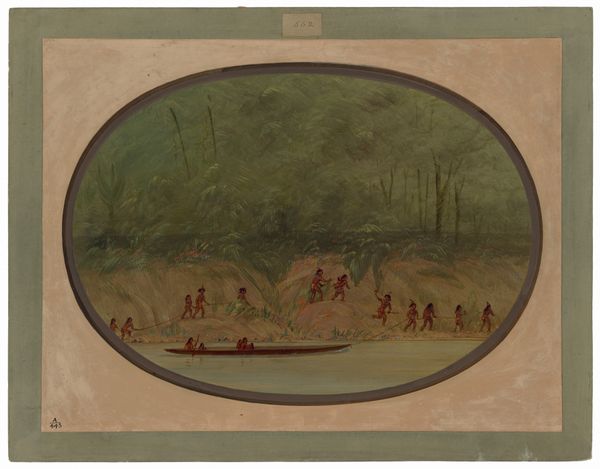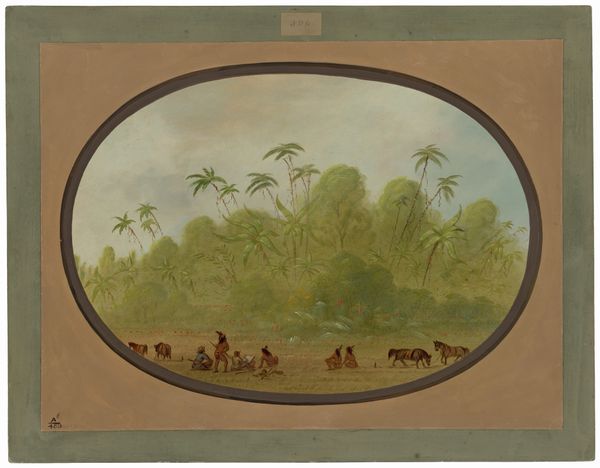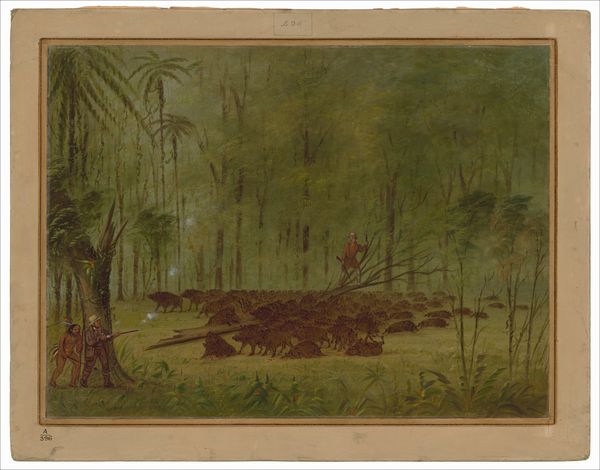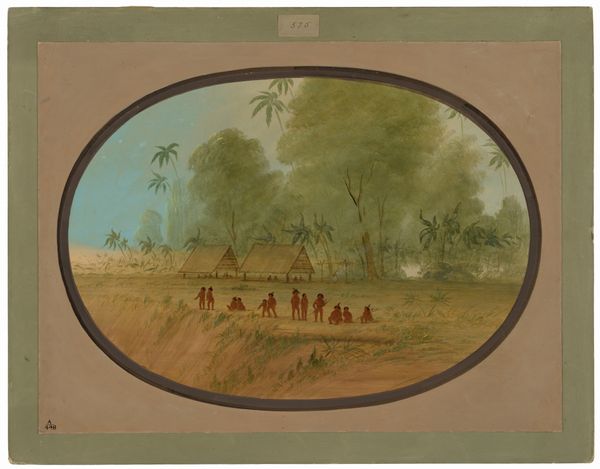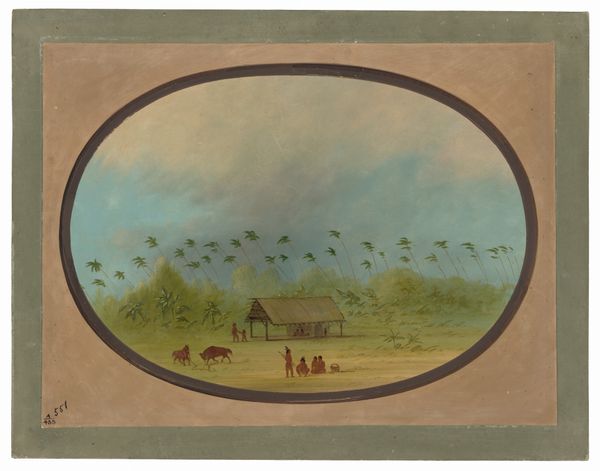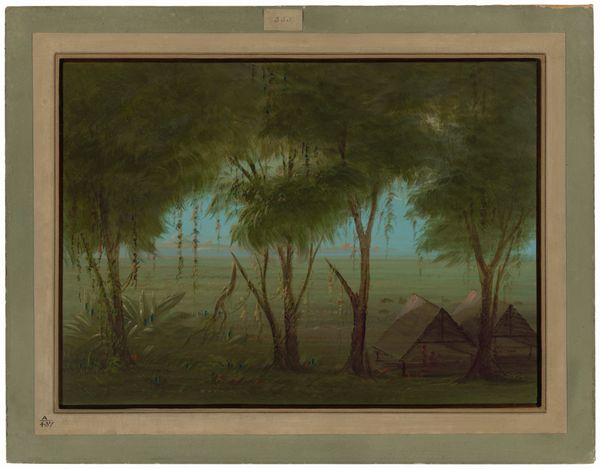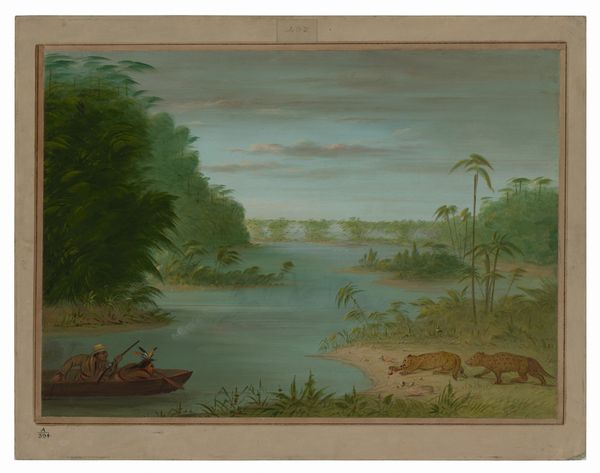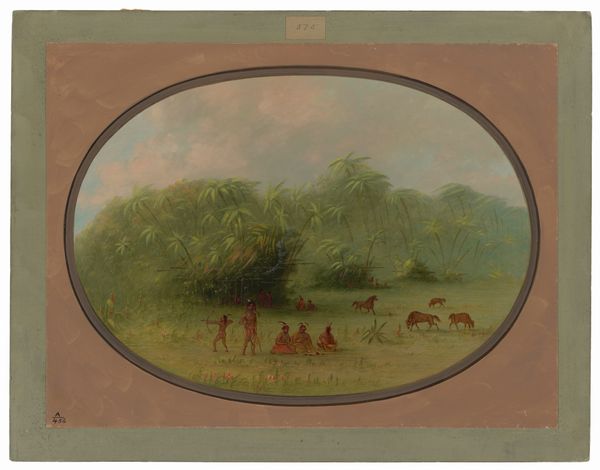
#
water colours
#
botanical photography
#
botanical drawing
#
painting painterly
#
watercolour bleed
#
watercolour illustration
#
natural palette
#
botanical art
#
watercolor
#
warm toned green
Dimensions: overall: 47.5 x 62.9 cm (18 11/16 x 24 3/4 in.)
Copyright: National Gallery of Art: CC0 1.0
Editor: Today, we’re looking at "Mauhees Encampment" by George Catlin, painted sometime between 1854 and 1869, using watercolours. There's a tranquil atmosphere; the colours are muted. What compositional elements stand out to you? Curator: The arrangement of the composition itself presents a study in contrasts. Notice how the artist uses colour to create a recession of space, moving from the brighter, warmer tones in the foreground, where figures populate the scene, to cooler, subdued greens in the densely rendered forest backdrop. Observe also how Catlin repeats similar tent-shapes for depth of field. Editor: So, the repetition contributes to the sense of space. Curator: Precisely. The texture, while seemingly uniform due to the medium, employs varying brushstrokes to differentiate elements, the dense foliage juxtaposed against the smooth expanse of the figures' skin, demanding closer scrutiny. Where does your eye focus when first viewing this piece? Editor: I’m immediately drawn to the figures clustered near the water’s edge. There’s movement and a clear focal point there. Curator: And what is the structural effect? By directing our focus initially to these groupings and subtly guiding our gaze deeper into the composition via lines created by trees and positioning of figures. The canvas employs sophisticated structure through the deliberate interplay of colour, texture and composition. Note, also the effect of that flat grey surrounding the artwork on how the colours within come to life, especially when considering tone relationships. Editor: That's true! Considering the interplay, it reveals a far more calculated and structured intention than I initially perceived. I guess what seems effortless in art is actually very deliberate! Curator: Precisely. Appreciating structure brings us to a new level of perception.
Comments
No comments
Be the first to comment and join the conversation on the ultimate creative platform.
